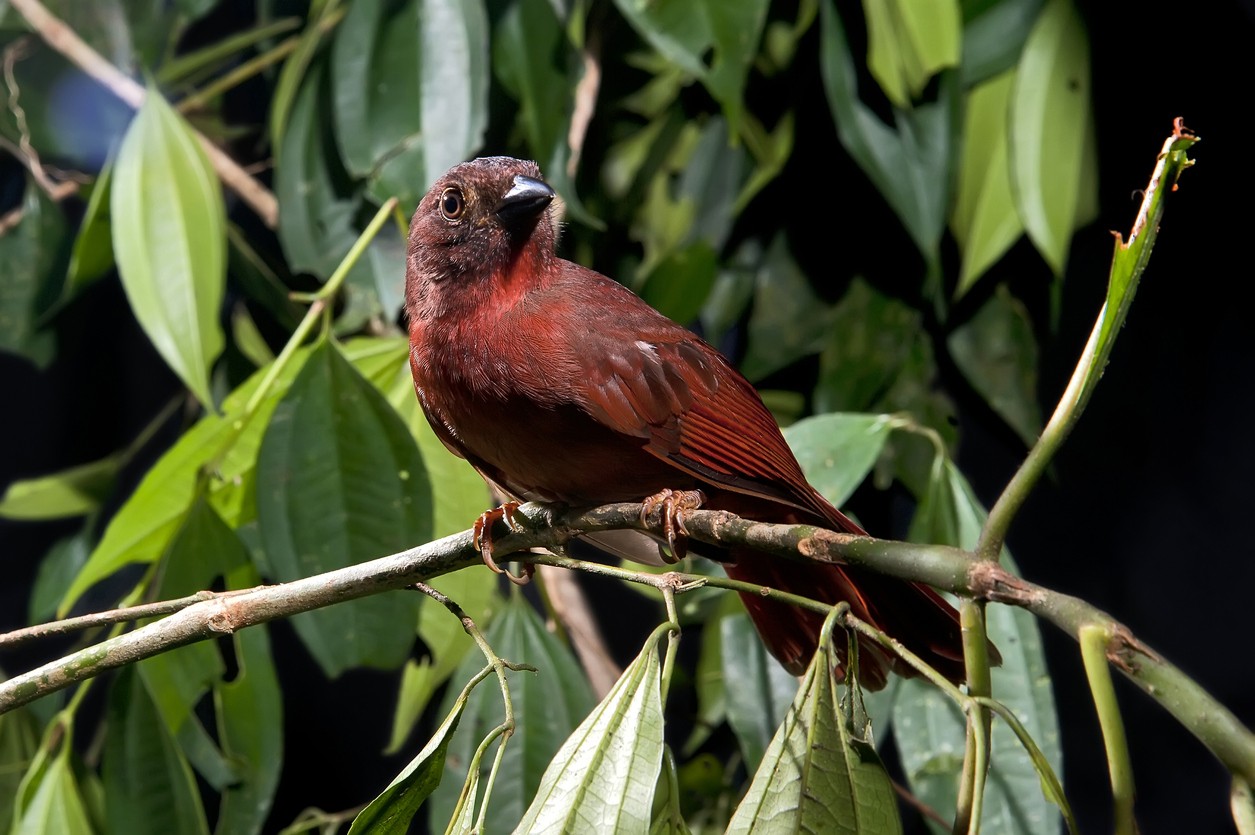Red-crowned Ant-tanager
A species of Ant Tanagers Scientific name : Habia rubica Genus : Ant Tanagers
Red-crowned Ant-tanager, A species of Ant Tanagers
Botanical name: Habia rubica
Genus: Ant Tanagers
Content
Description General Info

Description
The red-crowned ant tanager (Habia rubica) is a medium-sized passerine bird from tropical America. The genus Habia was long placed with the tanagers (Thraupidae), but it is actually closer to the cardinals (Cardinalidae). Consequently, it can be argued that referring to the members of this genus as ant-tanagers is misleading, but no other common name has gained usage. Red-crowned ant tanagers are 18 cm (7.1 in) long and weigh 34 g (1.2 oz) (male) or 31 g (1.1 oz) (female). Adult males are dull reddish brown with a brighter red throat and breast. The black-bordered scarlet crown stripe is raised when the bird is excited. The female is yellowish brown with a yellow throat and yellow-buff crown stripe. The Red-crowned ant tanager is a shy but noisy bird. Its call is a rattle followed by a musical pee-pee-pee. This bird is a resident breeder from Mexico south to Paraguay and northern Argentina, and on Trinidad. Common in its wide range, it is not considered threatened by the IUCN. It preferentially occurs in the middle stratum of the forest as well as undergrowth rich in ferns, shrubs and herbs. These birds are found in pairs or family groups. They eat mainly arthropods, but berries are also taken. In Central America and Trinidad they frequently attend army ant columns, and in the lowland forests of southeastern Brazil they may be a nuclear species of understory mixed-species feeding flocks – though further uphill, e.g. in the Serra de Paranapiacaba, they seem to join such flocks only rarely and prefer to follow the ants on their own. They also follow South American coatis (Nasua nasua) on their feeding excursions, namely in the dry season. In both cases, they are commensales, snatching invertebrate prey startled by the ants or coatis. The shallow cup nest is usually built in a sapling or tree fern near a stream, and the normal clutch is two brown-blotched white eggs. The female incubates the eggs for 13 days prior to hatching, with about ten days more before the chicks fledge. 
Size
19 cm
Nest Placement
Shrub
Feeding Habits
Red-crowned Ant-tanager predominantly feeds on arthropods, including weevils, other beetles, ants, caterpillars, and millipedes. Fruit, berries, larvae, mature insects, mantises, and snails also comprise its varied diet. Red-crowned Ant-tanager forages actively in vegetation, showcasing unique adaptations for extracting prey from foliage.
Habitat
Red-crowned Ant-tanager typically inhabits the leafy undergrowth and lower strata of humid, terra firme forests, and is often found in dense tall second-growth woodland. This species is also present in areas of várzea and transitional forests within the Amazon region. Preferring the forest interior, red-crowned Ant-tanager is seldom seen along river edges or at forest borders. Its habitat range extends from lowland areas up to higher elevations, varying by region across broad geographical zones that include tropical and subtropical areas of Central and South America.
Dite type
Frugivorous
General Info
Feeding Habits
Bird food type

Fruit
Species Status
Not globally threatened.


Scientific Classification
Phylum
Chordates Class
Birds Order
Perching birds Family
Cardinals Genus
Ant Tanagers Species
Red-crowned Ant-tanager